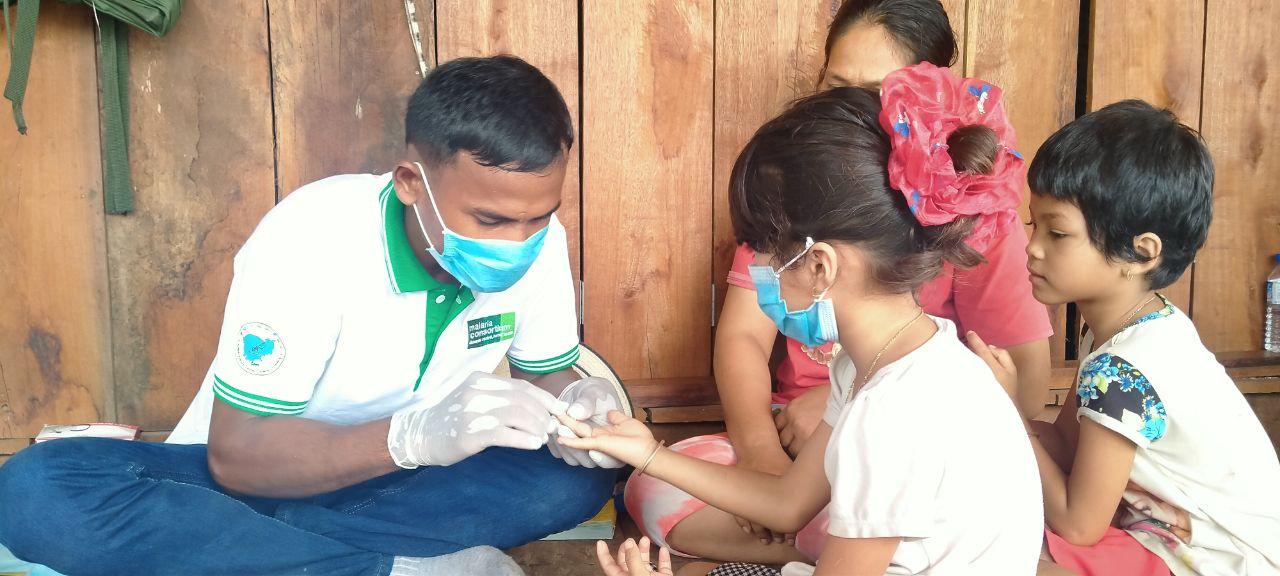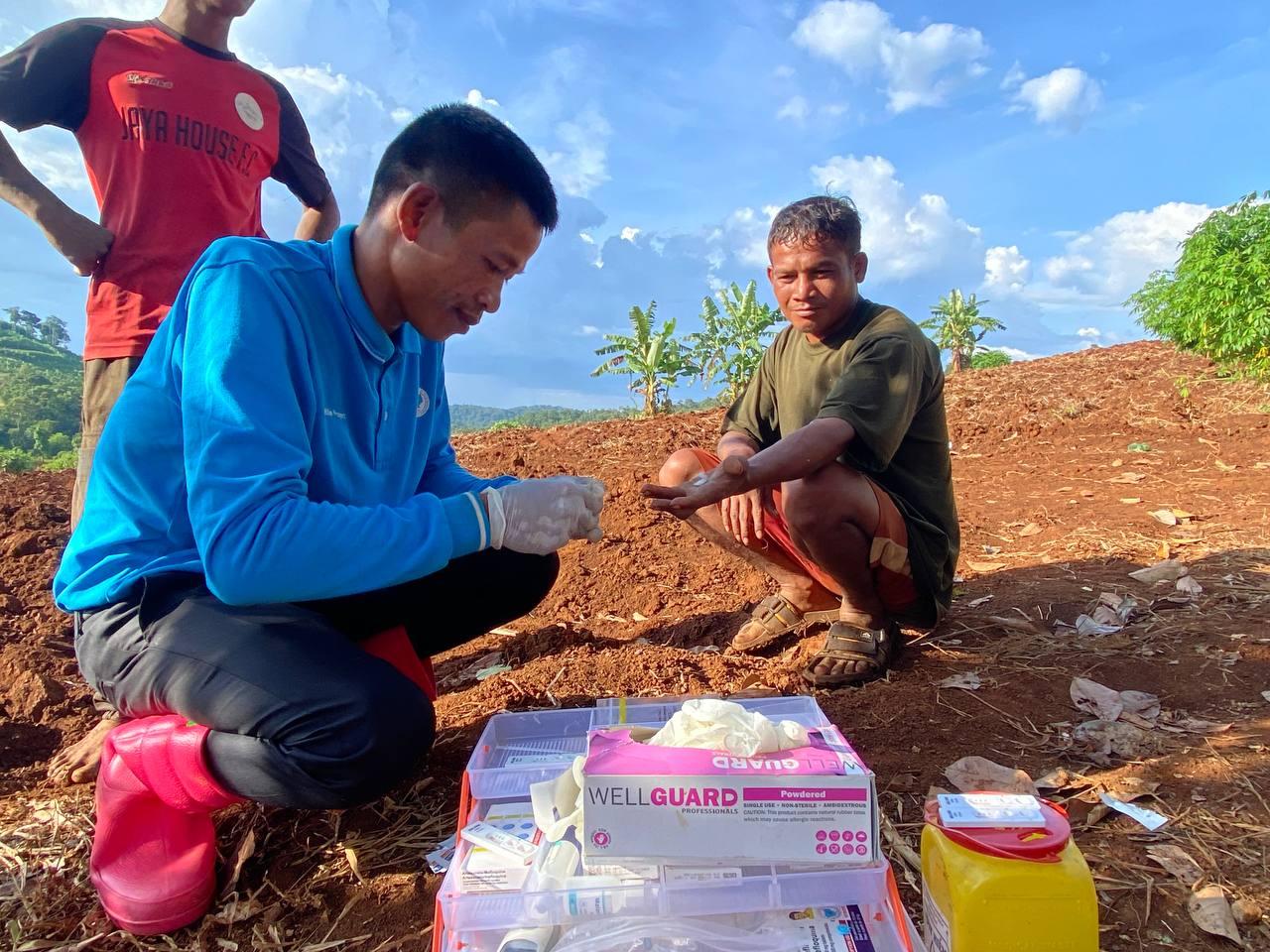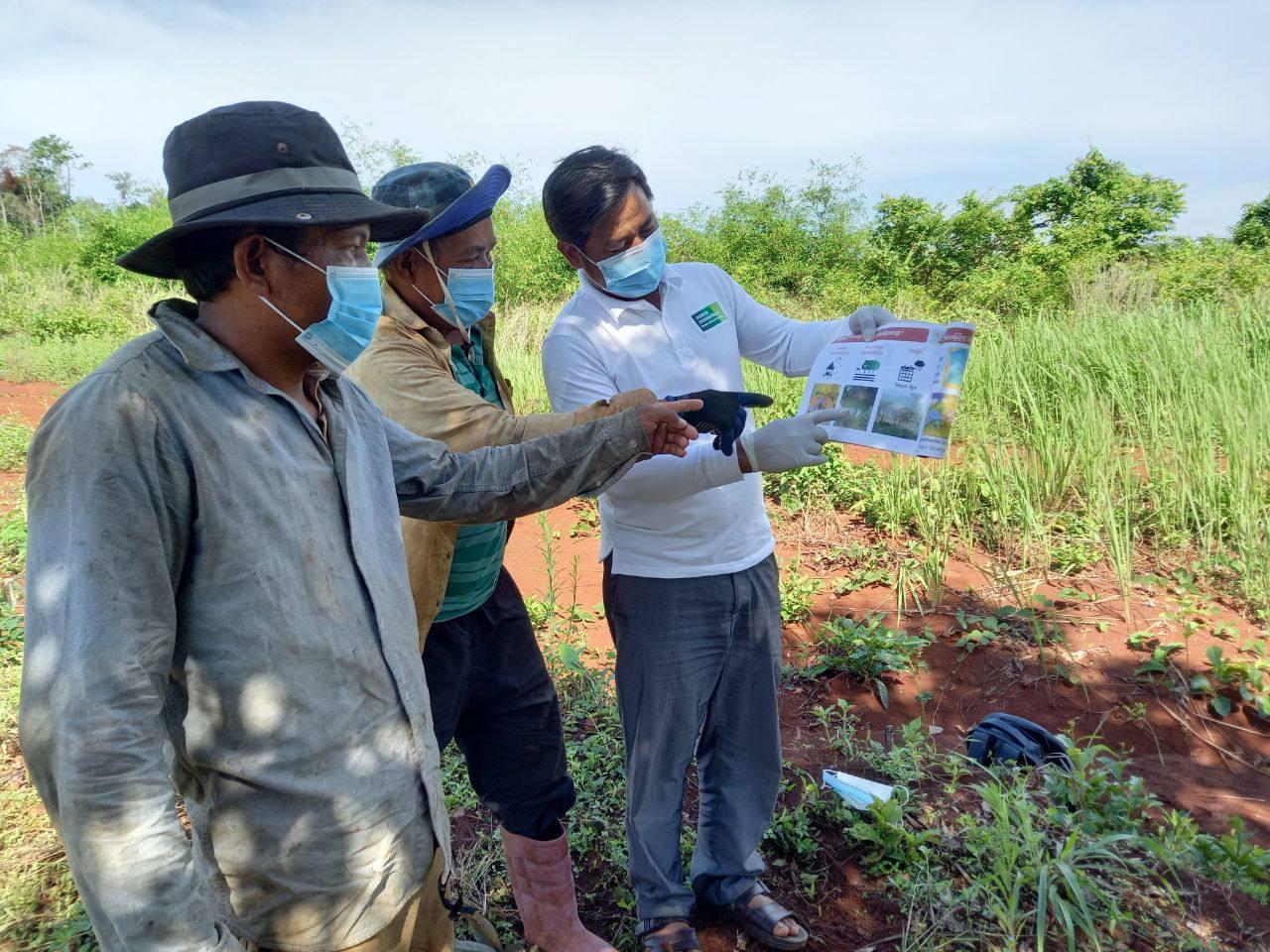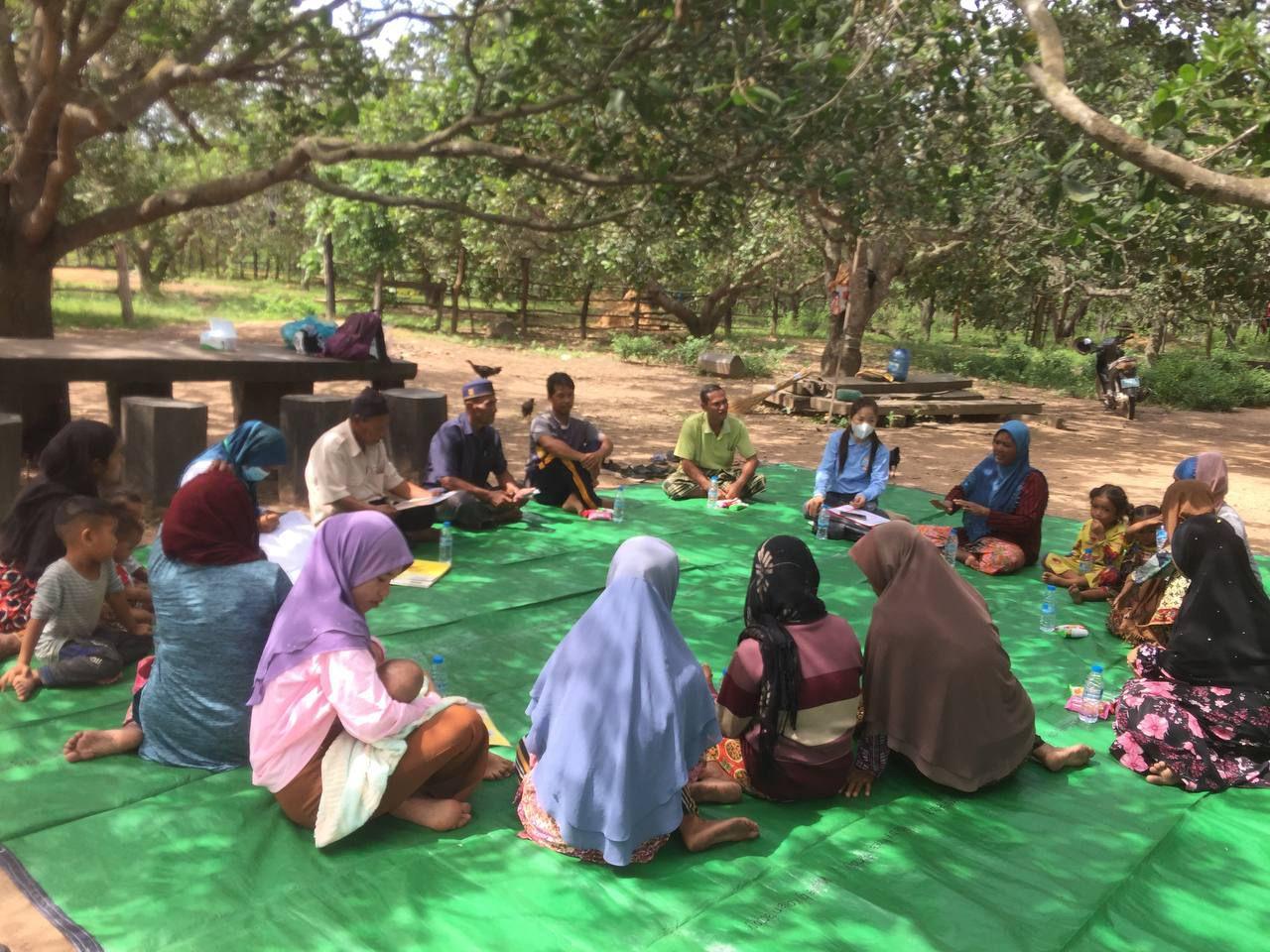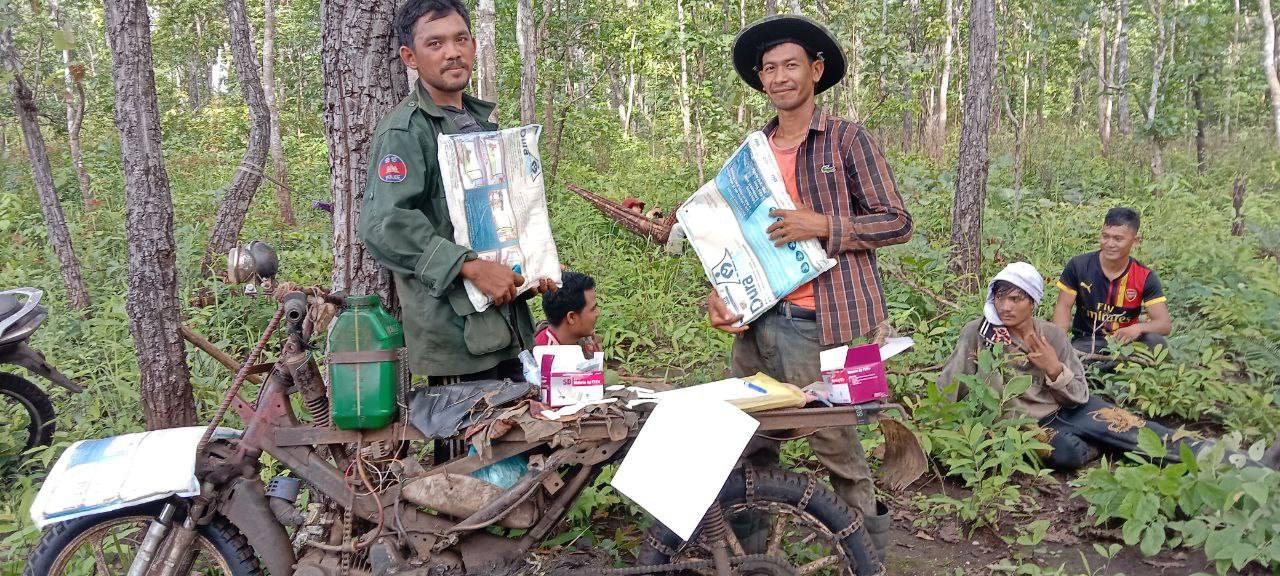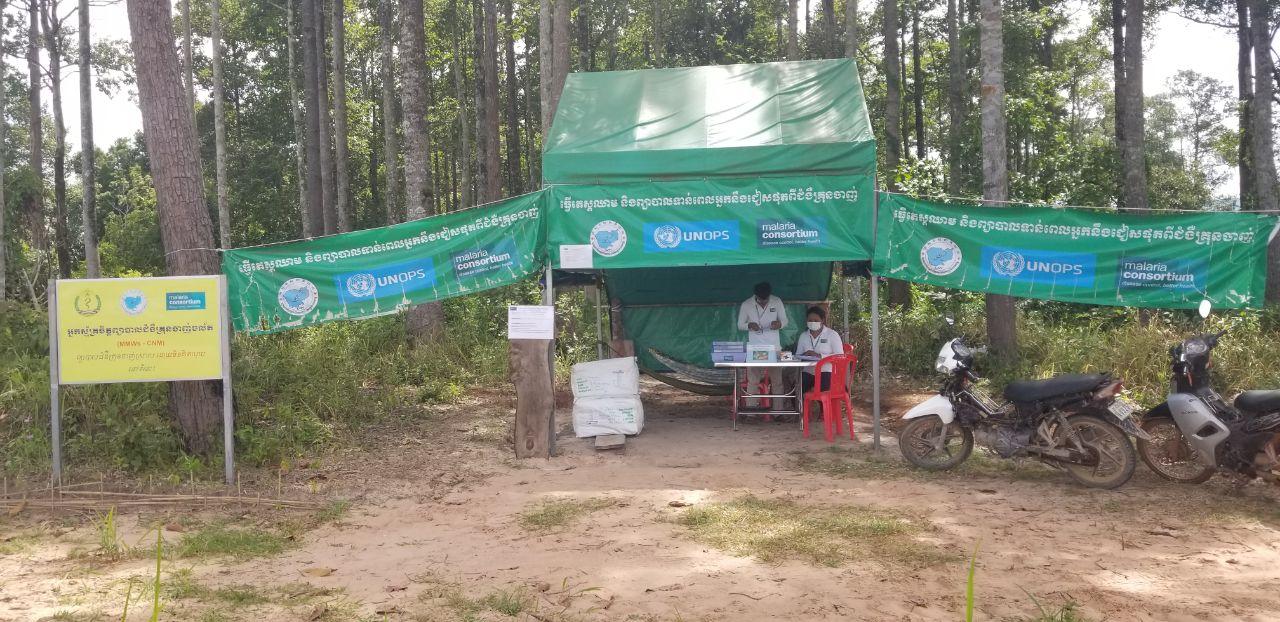Learn more about how we deliver quality malaria services to remote populations in the forested border areas of northern Cambodia.
Cambodia has achieved significant levels of malaria reduction. However, the local mobile and migrant populations in rural areas still lack access to malaria services. Through the Regional Artemisinin-resistance Initiative (RAI3E) grant, supported by the Global Fund, Malaria Consortium, in close collaboration with the National Malaria Program (CNM), has focused efforts on providing quality mobile malaria services to the most vulnerable and most at risk of infection from the remaining Plasmodium cases in the country. RAI3E aims to contribute towards Cambodia’s goal of eliminating P. falciparum by 2023 and P. vivax by 2025.
Northern Cambodia – the forested areas bordering Lao PDR and Thailand in particular – accounts for the majority (over 70 per cent) of Cambodia’s malaria cases and the highest prevalence of reported cases among mobile and migrant populations. Malaria Consortium has been working closely with CNM and other partners to accelerate coordinated efforts to implement the malaria project in the region.
Increased malaria testing
Since 2020, malaria cases have decreased as malaria testing numbers have risen in Cambodia. Malaria Consortium has many years’ experience in targeting hard-to-reach populations with active case detection approaches tailored to the remote populations in forested border areas in northern Cambodia. The support of RAI3E has contributed to the reduction of malaria transmission among populations who are unable to travel the long distance to their nearest health centre.
The importance of locally recruited mobile malaria workers
Mobile malaria workers (MMW), recruited by Malaria Consortium and trained by health centre staff, with support from Malaria Consortium, travel to remote and forested areas in northern Cambodia to deliver essential malaria services including free health education, malaria testing and mosquito net distribution. Some MMWs belong to a prominent ethnic group and speak the local language spoken by forest-goers and their families.
To reach the forest-goers and mobile communities in the hardest-to-reach areas of the Cambodian border with Lao PDR, Thailand and Viet Nam, MMWs travel mainly by motorbike, navigating dense forest trails, muddy paths and even flood waters. Typically, an MMW will travel between 15 and 40 kilometers or even more to reach a location.
Malaria prevention and health education
Many more people in these hard-to-reach areas are now taking ongoing measures to protect themselves from malaria infection because of the RAI3E intervention. Forest-goers, who typically sleep in hammocks in the forests, are motivated to wear long clothing and sleep under long-lasting insecticidal nets (LLINs) provided by Malaria Consortium, in the knowledge that doing so will reduce their chances of falling sick from malaria.
Through education sessions, MMWs engage communities in health education, teaching them about malaria prevention, testing and treatment. During outreach activities led by the MMW, short, free presentations take place in households, farms, plantations or other places in the village where groups live or work in close proximity.
Protecting key workers
In addition to testing and leading community dialogues to increase awareness of malaria transmission with the key workers such as local forest-goers, construction workers and plantation workers, MMWs also provide essential malaria services including rapid diagnostic testing, antimalarial treatment and mosquito nets to key workers.
Life-saving medicine
Without effective antimalarial treatment, malaria infection can cause severe illness and significantly increase transmission within the wider community. By focusing on the active detection of the last malaria cases in remote areas, this medicine contributes to the objective of the CNM to eliminate all malaria species by 2025 as part of Cambodia’s malaria elimination phase.
A network of 85 MMWs operates across six provinces in the forested international border areas of Cambodia. As well as directly reaching out to those people most at risk of malaria in their homes, there are also 18 mobile malaria posts and 49 outreach sites located across these six provinces for locals to attend for testing, treatment and health education. These malaria posts are available seven days a week, in the morning and evening when there is most movement of people.


